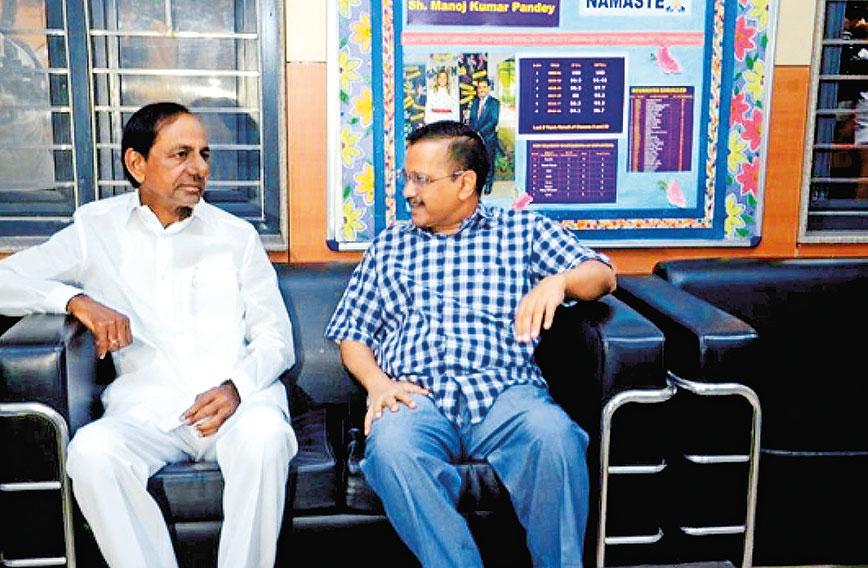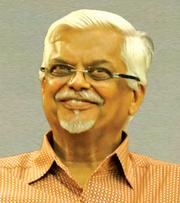

SANJAYA BARU
ECONOMISTS are familiar with the concept of a business cycle and some even with the idea of a political business cycle. The term business cycle refers to the ups and downs of economic activity as output, investment, employment and other such economic indicators rise and fall over time. Economists have been able to identify short-term, medium-term and long-term cycles. A political business cycle is a concept used to explain politically motivated increase or decrease in government spending associated with a democracy’s electoral cycle. Governments tend to increase public spending before elections and try to improve public finances through taxation and more prudent spending after elections.
Politics and public policy in India have also come to be defined by what one may term as a federal political cycle. In a large, continental democracy like India that is a ‘Union of States’, as the Constitution defines it, there is a constant struggle for power between political elements in power in the Union government and in the states. Given that there are democratically elected governments at both levels, the political factors shaping public policy at the Union level may often differ from, even be in conflict with, those that define public policy at the state level.
Apart from this purely administrative element, defined by the different constitutional roles of the Union and state governments, purely political factors may also come into play in defining what may be called the ‘balance of power’ between the Union and the states.
Students of Indian politics are all too familiar with such issues. Students of public finance are equally aware of what is usually referred to as ‘Centre-state’ financial relations. However, the Constitution has laid down certain principles that define both Centre-state financial powers and relations as well as the administrative power and domain of state governments. The authors of the Constitution also foresaw likely shifts in the ‘balance of power’ between the political elements in power at the Centre and in the states when they defined the provisions for the imposition of President’s Rule.
It was a decade and a half after Independence, in the twilight years of Prime Minister Jawaharlal Nehru’s tenure, that political tensions between the Union and state governments began to manifest themselves. The concentration of power in New Delhi in the first decade after Independence was partly defined by the compulsions of national unity and integrity and partly shaped by the fact that the same political party, the Indian National Congress, was in office at the Centre and in the states. However, as the Indian Union settled down to routine politics and Nehru’s dominance as well as that of the Congress party began to decline, regional and state-level political forces began to assert themselves.
Thus, the 1960s witnessed shifts in the balance of power between the Union and the states as regional leaders began to assert themselves after the death of Nehru. Political leaders like Charan Singh, C.N. Annadurai, E.M.S. Namboodiripad, K. Brahmananda Reddy, Y.B. Chavan, H.N. Bahuguna and so on emerged as influential political leaders. Some of them were leaders of non-Congress parties. After Nehru’s death the balance of power shifted in favour of the regions and away from the Centre.
After 1969, and especially after 1971, Prime Minister Indira Gandhi began to assert the power of the Union against the states. The Emergency years constituted the high point of this shift of power back to the Centre. The end of the Emergency resulted in a short period of centripetal political tendency that was again briefly reversed as the Congress regained power in New Delhi.
Beginning from 1989 and ending in 2014, India experienced a long phase of regional political assertion in which the Union had to constantly negotiate its relations with the states, with successive prime ministers dependent on powerful chief ministers for their own survival in office. Interestingly, all the three important prime ministers of this era, namely, P.V. Narasimha Rao, Atal Bihari Vajpayee and Manmohan Singh, were able to manage the constant shifts in the balance of power between the Union and the states quite well. For example, there were fewer cases of the imposition of President’s Rule during their tenures than the tenures of Indira Gandhi and Rajiv Gandhi.
The election of 2014 marked the beginning of another phase in which the balance of power shifted away from the states back to the Centre. The improved electoral margin with which Prime Minister Narendra Modi returned to power in 2019 further consolidated the power of the Union government vis-a-vis the state governments.
However, every time there has been an excessive tilt to one side of the equation, political forces have come into being, seeking to restore some balance. Thus, in response to Prime Minister Modi’s attempts at excessive centralization of power, regional political parties have become more assertive. Political parties with a base in the non-Hindi states have been particularly active, as in Kerala, Maharashtra, Punjab, West Bengal, Tamil Nadu and Telangana, but in Hindi states too new forces are emerging, asserting regional identities as opposed to the national.
The election to the post of President of India has offered an opportunity for all ‘regional’ forces to try and unite and correct the imbalance in the power equation between the Union and the states, nudging the federal political cycle in the direction of enhanced power for states vis-a-vis the Union. Irrespective of who wins the presidential race, the contest itself will bring forth issues relating to the balance of power between the Union and the states.
At least one issue that deserves closer scrutiny is the political role of governors in the states. The Bharatiya Janata Party is repeating Indira Gandhi’s folly of using partisan governors to unsettle elected governments in states. An unseemly and partisan battle between the governor and the chief minister was first witnessed in Kolkata. This has since been followed by the political theatrics of the governor of Telangana. In Tamil Nadu, a retired police officer occupies the Raj Bhavan, troubling the CM, while in many other states governors are openly partisan in their public appearances and speeches.
Taken too far, this centripetal turn in the federal political cycle will set in motion centrifugal forces that will seek to restore balance in the equation.
Sanjaya Baru is a writer and Distinguished Fellow at the United Service Institution of India.
Comments
Currently there are no Comments. Be first to write a comment!



